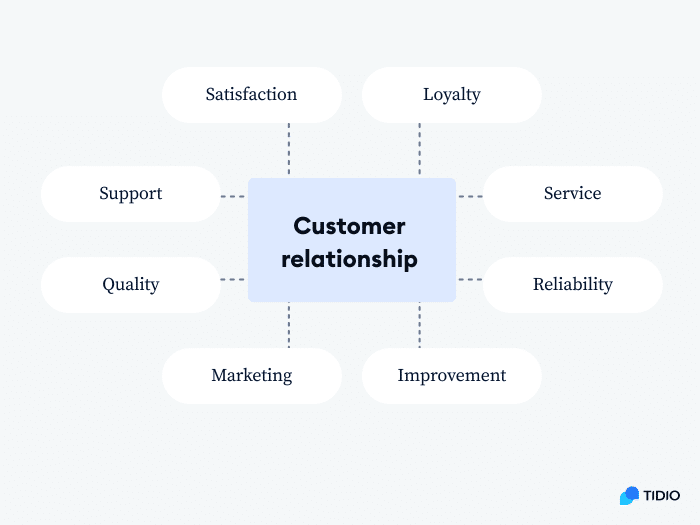Referral Marketing Strategies for Business Growth
Reading Time: 5 minutes
It is essential to establish efficient marketing methods that spur growth in the cutthroat corporate environment of today. Referral marketing is one tactic that has shown to be very successful. Businesses can use word-of-mouth advertising to reach out to their current clientele and win over new ones. In this blog post, we’ll examine the idea of referral marketing and talk about numerous tactics that can support firms in maximizing its potential for rapid expansion.
What is Referral Marketing?

Referral marketing is a technique for increasing sales that relies on the recommendations of current customers. Referral marketing has gained popularity as a result of the emergence of social media and online discussion forums, which make it simple for happy customers to share their impressions of trustworthy firms with others. Referral marketing, commonly referred to as word-of-mouth marketing, is one of the best strategies for boosting brand recognition and attracting new clients. According to studies, referrals have a higher rate of conversion into sales than other sources, have better customer retention rates, and produce more revenue per client.
1. Understanding Referral Marketing

Referral marketing is a technique that motivates current clients to recommend a company to their friends, family, and coworkers. It makes use of the confidence and trust that clients have in their personal networks. A customer’s recommendation of a business functions as a personal endorsement, increasing the likelihood that the person being recommended will become a customer. As it capitalizes on the influence of word-of-mouth, referral marketing is an affordable and successful technique for business growth.
2. Building a Referral Program

Businesses must have a structured referral program in order to successfully deploy a referral marketing plan. Customers should be rewarded for their efforts and receive incentives under this program to recommend others. Developing a referral program involves the following crucial steps:
a) Define clear objectives: Determine what you want to accomplish with your referral program, such as improving customer acquisition or raising revenue, in step a) by defining specific objectives.
b) Identify target customers: Recognize your ideal clients and pinpoint the traits of people who are most likely to recommend your business.
c) Develop enticing incentives: Provide incentives that encourage customers to recommend others. Discounts, special access to goods or services, or even monetary prizes are examples of these incentives.
d) Develop a seamless referral process: Make it easy for customers to refer others by providing them with referral links, personalized codes, or referral cards. Streamline the process to minimize friction and maximize participation.
e) Track and evaluate results: Set up a way to monitor referrals and assess the program’s effectiveness. By doing so, you may determine what is effective and make the required adjustments.
3. Leveraging Digital Channels
Businesses can use a variety of internet platforms in the digital age to boost their referral marketing initiatives. Here are some tactics to take into account:
a) Social media campaigns: Encourage clients to post about their satisfying interactions on social media sites. Provide rewards for sharing and tagging others to spread the word virally. Make use of social media listening tools to track down and interact with brand advocates.
b) Influencer collaborations: Work with influencers who share your brand’s values and have a sizable fan base. The referral process may be considerably impacted by their recommendations. Offer exclusive deals or discounts to influencers so they can share them with their audience.
c) Email marketing: Make use of your email list to contact current clients and solicit referrals from them. Make the message more individualized and emphasize the advantages of referrals. Think about rewarding or rewarding both the referrer and the recommended with referral incentives or discounts.
d) Referral landing pages: Develop specific landing pages that explain your referral program and make it simple for customers to refer others. For organic traffic, improve the search engine optimization of these pages.
e) Customer testimonials and reviews: Encourage pleased customers to post reviews and testimonials on review websites or your website. Positive customer feedback serves as social proof and encourages referrals. Think about providing rewards for customers who submit reviews, such as a chance to win a prize.
4. Nurturing Customer Relationships

Businesses must place a high priority on customer satisfaction and develop solid relationships in order to enhance the effectiveness of referral marketing. Here are some methods for fostering client relationships:
a) Deliver first-rate customer service: Go above and beyond to satisfy customers. Concisely answer questions, deal with problems quickly, and genuinely care about their requirements. Develop the skills of your customer service personnel to offer individualized and sympathetic support.
b) Personalize the customer experience: Tailor your interactions and offerings to meet individual customer preferences. Use data and analytics to understand their needs and provide personalized recommendations. Consider implementing a customer relationship management (CRM) system to track customer interactions and preferences.
c) Implement loyalty programs: Reward loyal customers with exclusive perks, discounts, or early access to new products. This not only encourages repeat business but also increases the likelihood of referrals. Consider tiered loyalty programs to incentivize customers to refer more people.
d) Ask for feedback: frequently to determine client satisfaction levels and pinpoint areas for improvement. Actively respond to their suggestions and worries. A Net Promoter Score (NPS) survey should be used to measure customer loyalty and discover potential champions.
e) Remain involved: Continue to communicate with clients on a regular basis via newsletters, social media, or customized emails. Inform them about any newest products, deals, or events. To create a feeling of community and fortify connections, think about holding webinars or events to show your thanks for your clients.
Conclusion
By utilizing the influence of word-of-mouth, referral marketing is a potent tactic that can significantly increase business growth. Businesses can maximize the effectiveness of referral marketing by putting in place a systematic program for referrals, utilizing digital platforms, and fostering customer relationships. Remember that your best brand ambassador is your satisfied customer, and by giving them the authority to tell others about you, you may access a powerful and affordable marketing channel. So begin utilizing the power of referrals right away and watch your company flourish. Referral marketing has the potential to develop into a scalable and long-lasting development engine for your company with the correct methods in place.
Sell more, understand your customers’ journey for free!
Sales and Marketing teams spend millions of dollars to bring visitors to your website. But do you track your customer’s journey? Do you know who buys and why?
Around 8% of your website traffic will sign up on your lead forms. What happens to the other 92% of your traffic? Can you identify your visiting accounts? Can you engage and retarget your qualified visitors even if they are not identified?
